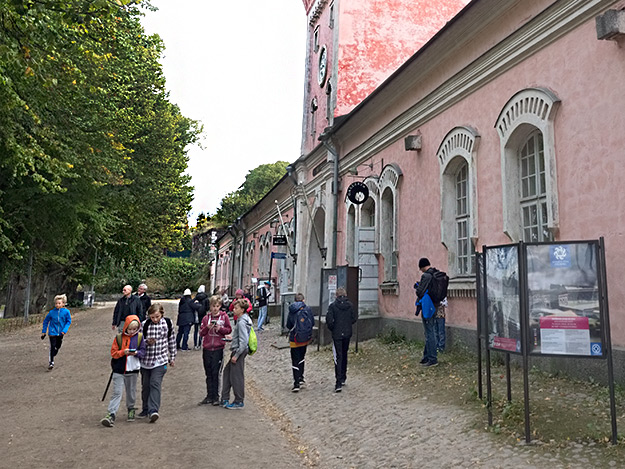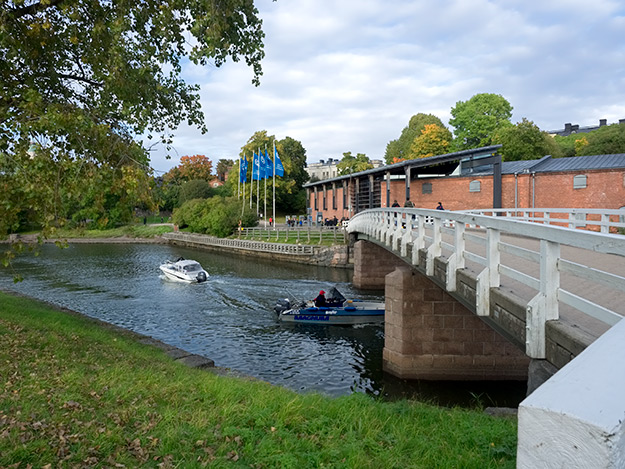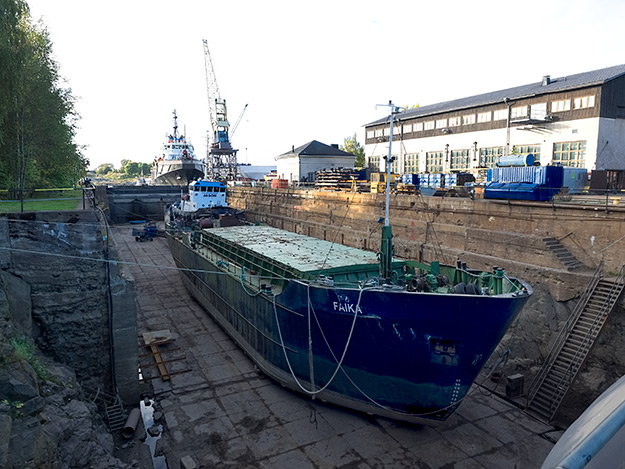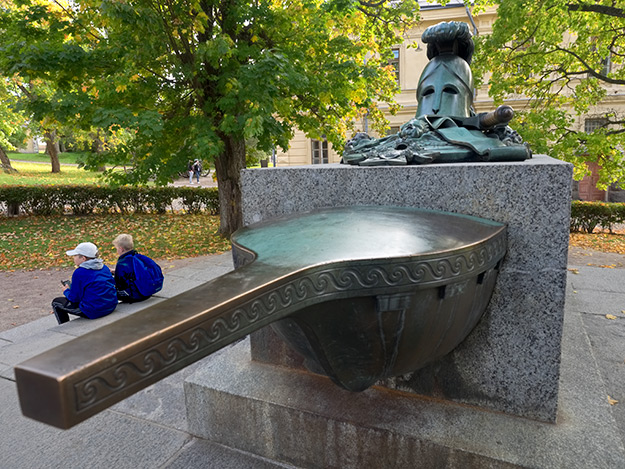Two young boys standing in front of me at Helsinki Harbour fidgeted and poked furiously at their mobile phones. I couldn’t understand a word they were saying but their excitement was unmistakable. All up and down the line, kids and parents were waving phones around and gesturing excitedly. Suddenly, one child cried out and pointed toward the ferry boat. My curiosity finally got the better of me and I asked a woman what was going on.
“It’s Pokémon GO,” she replied. “There’s supposed to be a character here at the dock.”
For those of you who have been living in a cave, Pokémon GO is the newest fad in children’s electronic games. Its description, taken from the website of the Japanese developers, states, “Pokémon are creatures of all shapes and sizes who live in the wild or alongside humans…Pokémon are raised and commanded by their owners (called “Trainers”). During their adventures, Pokémon grow and become more experienced and even, on occasion, evolve into stronger Pokémon.”

Pokémon uses a mobile phone’s GPS, clock, and camera to display the cartoon-like characters on a cell phone screen. Some Pokemon characters are found in their natural habitats – for example, Squirtles and Poliwags tend to be found in and around lakes. But Pokémon can be found pretty much anywhere. The technology is so advanced that if you’re hunting after dark, you’re more likely to see fairies or night creatures. The goal is to capture as many of the 700+ creatures that inhabit the Pokémon universe as possible.

The ferry I was waiting to board was destined for Suomenlinna Fortress, an 18th-century European-style bastion fortification built on six rocky islands just off the coast of Helsinki. Hoping to expose their kids to a bit of history, parents have long favored this UNESCO World Heritage Site as a picnicking destination. But when word got out that the island was overflowing with Pokéman, kids began dragging their parents to Suomenlinna. Young adults have been caught skipping school to hunt Pokémon on the islands. Ferries have become so packed that full-time residents are having difficulty traveling back and forth from the mainland. Thankfully, there were no Pokémon on the ferry, so I was able to enjoy the trip over in relative peace. However, the moment we docked a mad rush ensued, and it had nothing to do with history.

Hoping to escape the crowds, I wandered off the beaten path. A path atop the old star-shaped stone fortifications led to the original naval base and dry dock, where ships were stored, built, and repaired. I stood on the observation platform, marveling that the old shipyard was still in use, while trying not to breathe in fumes wafting up from paint stripping operations. Adjacent to the docks I found a Baroque square surrounded by quarters that had once housed officers. At the center of the square lay the grave of Augustin Ehrensvärd, the young Swedish office and architect who had been chosen by the King Frederick I of Sweden to design and construct the fortress.

Today Suomenlinna Fortress has no military use, but in the mid-18th century, when Sweden controlled all the lands we now know as Finland, it was a crucial deterrent against Russian aggression in the Baltics. Peter the Great became Tsar of Russia in 1682 and turned his gaze to the west. He knew that for Russia to become a great nation, it needed access to trade routes on the Baltic Sea. He began draining the swamps at the mouth of the Neva River where it flowed into the Gulf of Finland. Here he built the city of St. Petersburg, which provided access to the Baltic Sea, the North Sea, and beyond. By 1712, he had officially moved the Russian capital from Moscow to St. Petersburg.
During this period, Russia was methodically beating back Swedish influence in the area. In 1700, Tsar Peter allied Russia with Denmark-Norway and Saxony-Poland in the Great Northern War against Sweden. Russia subsequently captured Nyenskans, a fortress that had been built by the Swedes at the mouth of the Neva River. Deprived of their most important military stronghold in the Gulf of Finland, the Swedes fell back to this group of six small islands near present-day Helsinki. In 1748 they began construction on the complex that would become the Suomenlinna Fortress.

Work continued on Suomenlinna for the next 40 years. By 1754, the base was considered operational, if incomplete, but work halted three years later when Sweden became embroiled in the Seven Years’ War. Construction resumed sporadically after the war, but after the death of Ehrensvärd in 1772, garrisons at the fort were so drastically reduced that not even a tenth of the artillery could be manned. The subsequent Russo-Swedish War of 1788-90 severely weakened Sweden economically and politically. Russia finally occupied Finland for good in 1808. They captured Helsinki with ease and turned their attention to the offshore fortress.

At the time, Suomenlinna was under the command of Carl-Olof Cronstedt, a naval commander who had been responsible for Swedish victory at the Second Battle of Svensksund, one of the largest naval battles in history. To the utter astonishment of the Swedes, Cronstedt surrendered to the Russians following a two-month siege. At the time of his capitulation, the fortress was manned by 6,000 troops and was considered impregnable. As a result, Sweden was forced to sign a peace treaty that relinquished the territory of Finland to Russia. They gave up a landmass equal to about half of their kingdom.
Why Cronstedt decided to surrender is an enduring mystery. One theory has it that he was bribed by the Russians. He was given a pension by Russia after the war, however the amount was extremely small. More likely, he surrendered in order to save more than 2,000 civilians who had taken refuge on the island. Suomenlinna was reputed to be the “Gibraltar of the North,’ but Cronstedt knew better. The fortress had been given little in the way of funding since the end of the Russo-Swedish War. It was low on supplies, including gunpowder. Even if supplies had been sufficient, the cannons on the island were old and obsolete, and their range was far shorter than Russian artillery. Some say that Swedish officers imprisoned on the mainland were forced to write letters to Cronstedt, pleading with him to yield to the Russians. Modern historians who have reviewed the commander’s decision are less inclined to condemn him.

I sensed a certain symmetry between the mystery of Cronstedt’s surrender and present-day Suomenlinna. Off the main roads, I was virtually alone. I walked along batteries where my only companions were the old cannons that still gaze seaward. The maze of tunnels that punctuate the fortress walls were totally deserted. Few people were visiting any of the six museums on the islands. Crowds were present only in locations where Pokémon creatures awaited capture.
On one hand, I was pleased that technology has renewed interest in such an historic site. On the other hand, I was somewhat disturbed that hundreds of children had spent the day running around with noses buried in their phones, completely indifferent to the history of one of the greatest sea fortresses ever built. For me, that is an inconceivable mystery.
Author’s note: There’s much more to see and do in Helsinki, Finland, beyond Suomenlinna Island. I spent several days exploring this capital city, but this article is a great reference for what to see and do during a short stay in Helsinki.

An interesting take on how much our call phones have to do with our daily lives. Too bad the folks in the photo don’t pay attention where they are
It was a shame, Irene, but at least it got the kids out of he house.
A very interesting account on a city I visited the first time in 1969 with my parents. Since I have come to Helsinki or Helsingfors, as the Swedes call it. Looking forward to read more about your trip to Finland.
I’m afraid my stay was very brief, so this time around my account of Suomenlinna Island is the only story about Helsinki, Peter.